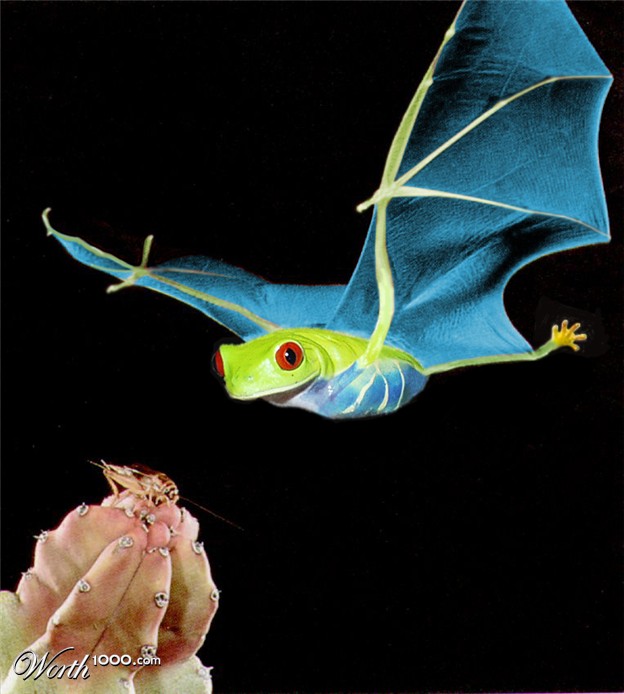Bats are considered insectivorous. This means they rid our planet of those annoying insects. In one hour, a single bat can consume up to 1,000 mosquitoes! That's WAY more than I can eat. I think my personal best is something like 15...maybe 20. Bats can also see in the dark and have an extreme sense of hearing. And, yes, some bats do drink blood, but not all of them. Humans tend to think of bats as being unclean and spreading disease. But, really, they help the planet by eating many of those pesky (and delicious!) insects that do cause disease. And did you know that bats groom themselves almost constantly? They're very clean critter!
Experts disagree as to the exact number, but it is estimated that there are between 900 and 1200 species of bats in the world, making up one-fifth of the entire mammal population! Bats are divided up into two main types: megabats which include Flying Foxes and Old World fruit bats and tend to be larger in size than the microbat (but not always). The smallest megabats is the long-tongued fruit bat (a bat after my own heart!) and has a wingspan of only 10 inches (25.4 cm). This bat only weighs a half ounce! Among the microbats, the largest one is the false vampire bat with a wingspan of 40 inches (1 meter) and weighs 5-6 ounces (145-190 grams). The Giant Golden-Crowned Flying Fox bat is the largest species known. These bats can weigh up to an impressive 4 pounds (1.814 kilos) and has a wingspan of up to 5.7 feet (1.737 meters). Can you imagine seeing THAT chasing after you??? The smallest bat is called the bumblebee bat. It grows to only 1.25 inches long (3 cm) and weighs only 0.07 ounces (2 grams).
Bats live all over the world, except for some islands, the Arctic, and Antarctica. Like us frogs, they prefer warmer climes. Bats have two strategies for weathering the cold: migrate to a warmer place (smart!), and some go into a short-term hibernation called torpor. This reduces the bat's metabolic rate, lowers its body temperature, and slows its breathing and heart rate, thus enabling them to survive cold weather.
And did you know that bats are the only mammal capable of true (and sustained) flight? The US is home to 48 species of bats and 70% of all bats are the insect-eating kind.
The largest urban bat colony lives under the Anne W. Richards Congress Avenue Bridge in Austin, Texas. It is home to 1,500,000 Mexican Free-tailed Bats, thus earning Texas a spot in the top three US bat states. This colony of bats eats an estimated 10,000 to 30,000 pounds (4535.924 to 13607.77 kilograms) of insects every night
Forty percent of the bat population in the US is in severe decline, with some are already listed as endangered or threatened. One colony of Big Brown Bats can protect framers from up to 33 million+ root worms each year. Some horseshoe bats can hover and pluck insects from spider webs! I must admit, that fact makes me a little jealous. And an anticoagulant found in vampire bat saliva has been adapted for use in increasing blood flow in patients with strokes and heart disease.
I hope these fun facts about bats have helped you to appreciate them more. Bats are a necessary part of the ecology and, I think, one of the most interesting. Want to celebrate this day? It's easy! Just use #BatAppreciationDay on all your social media.

 RSS Feed
RSS Feed